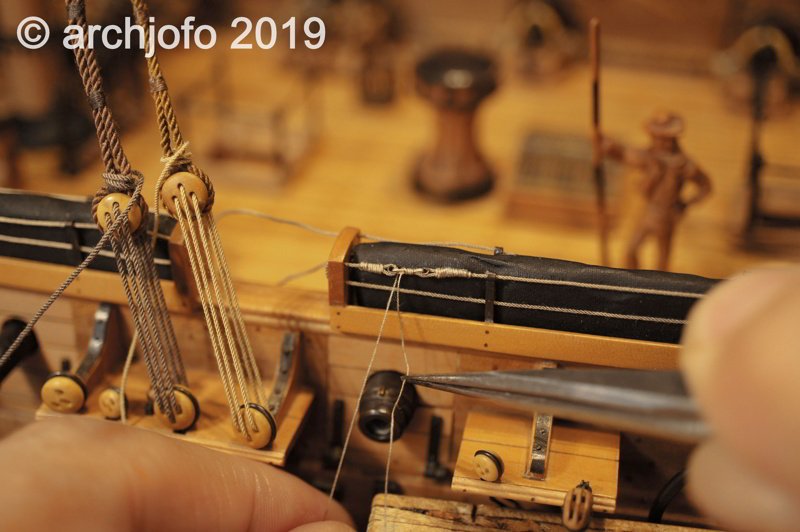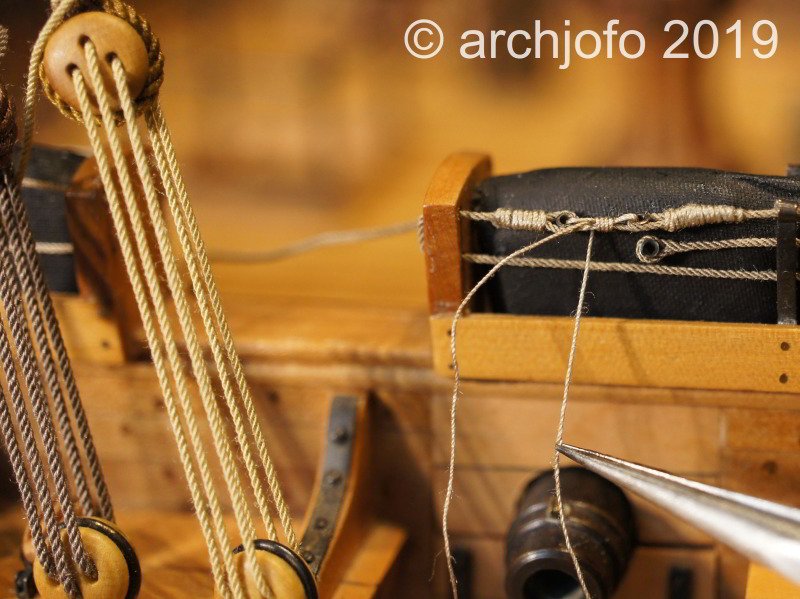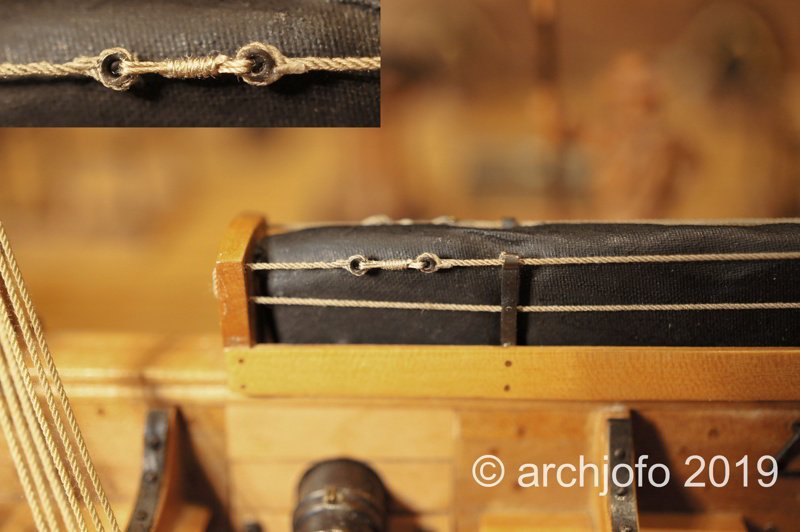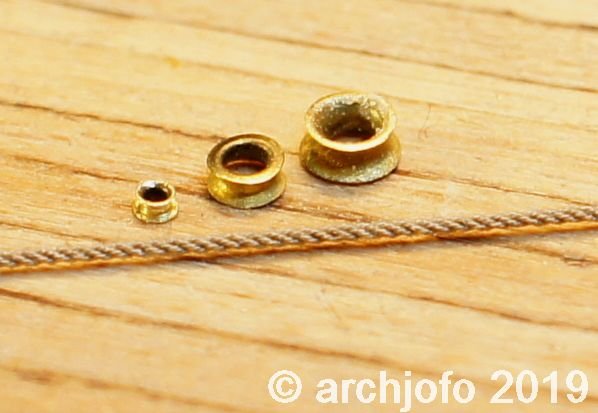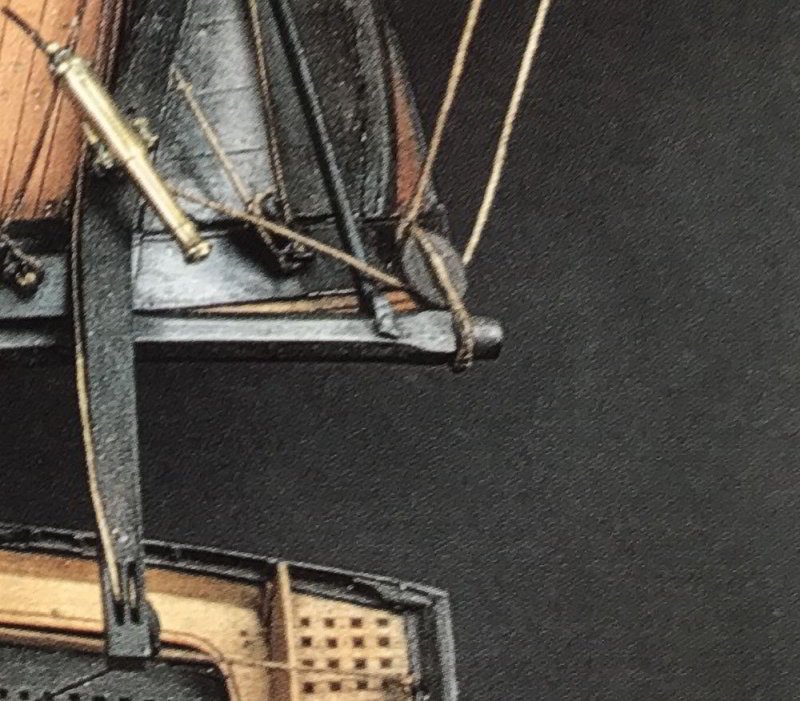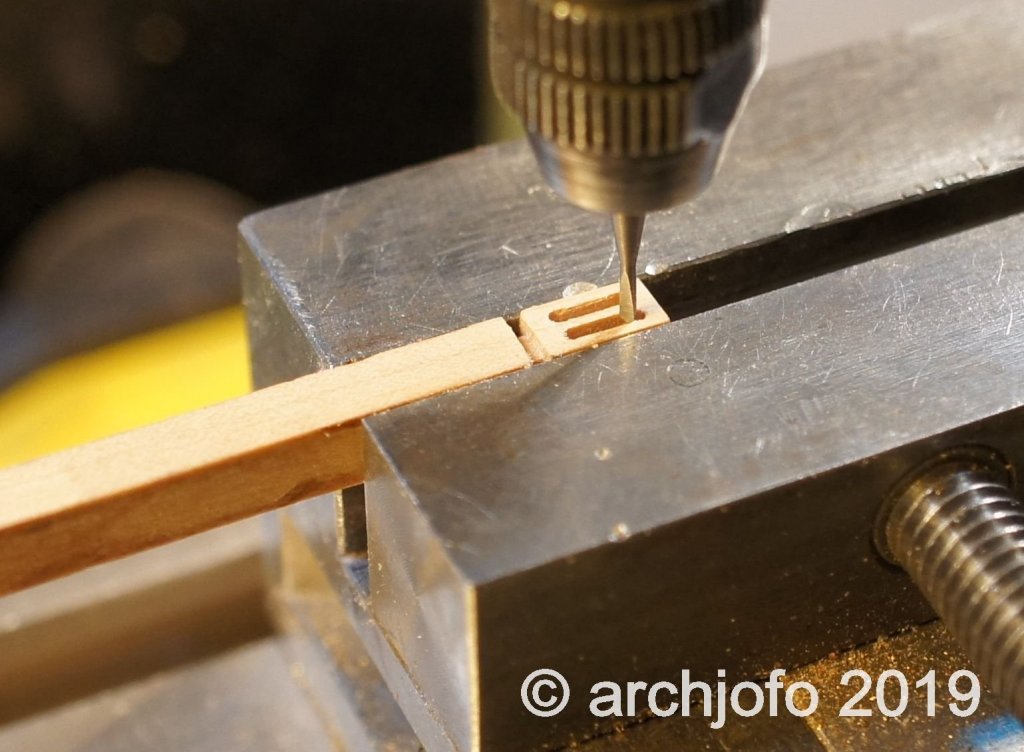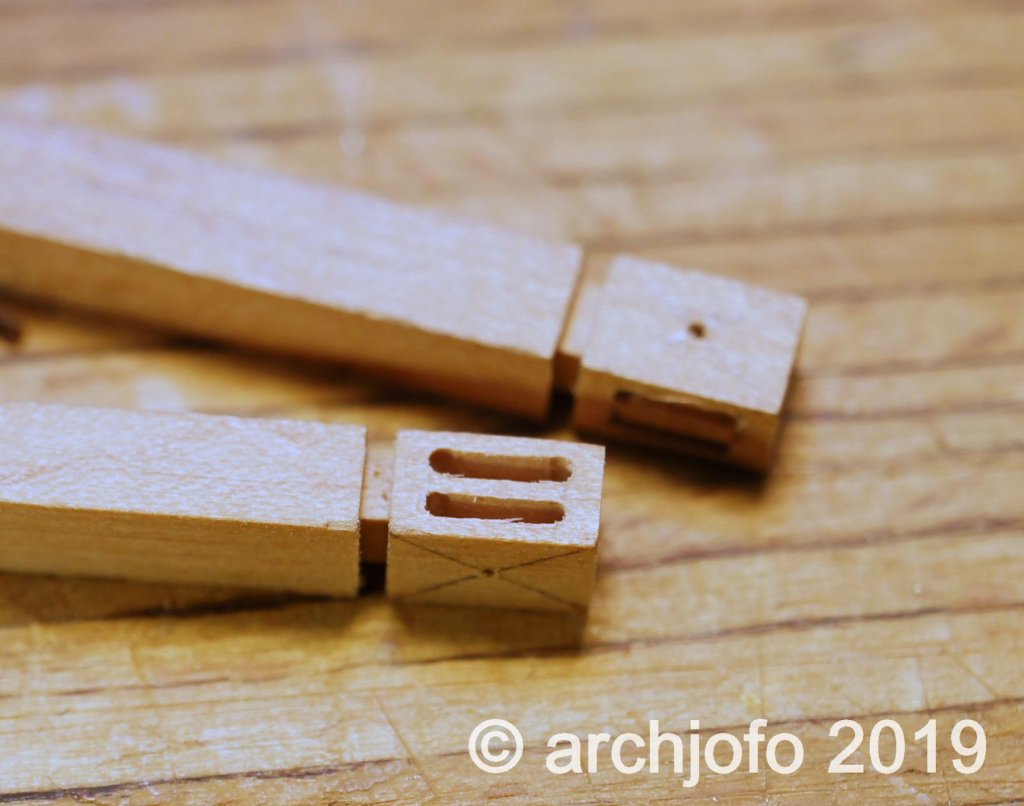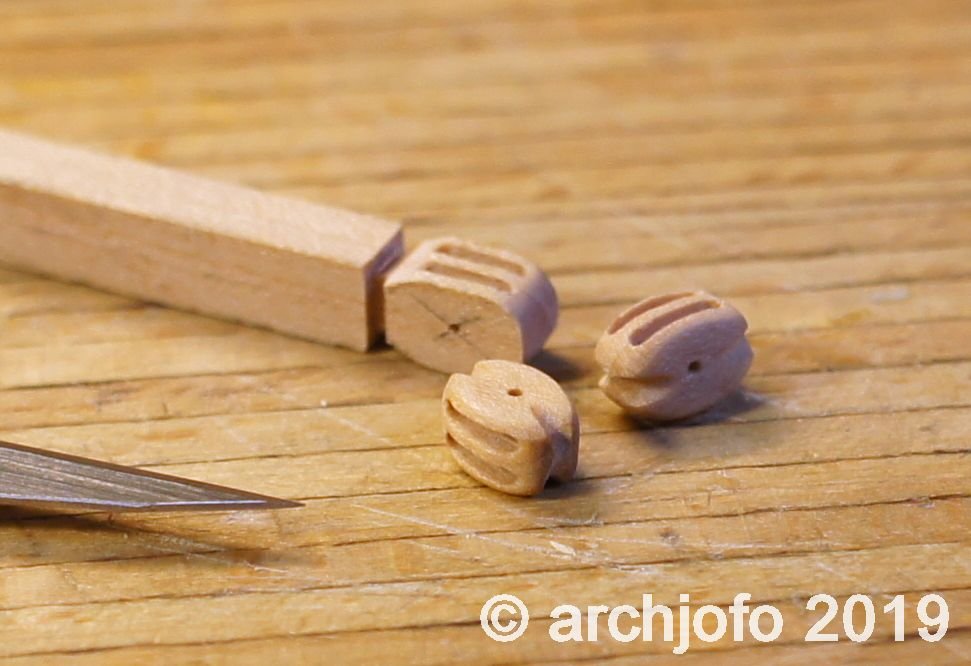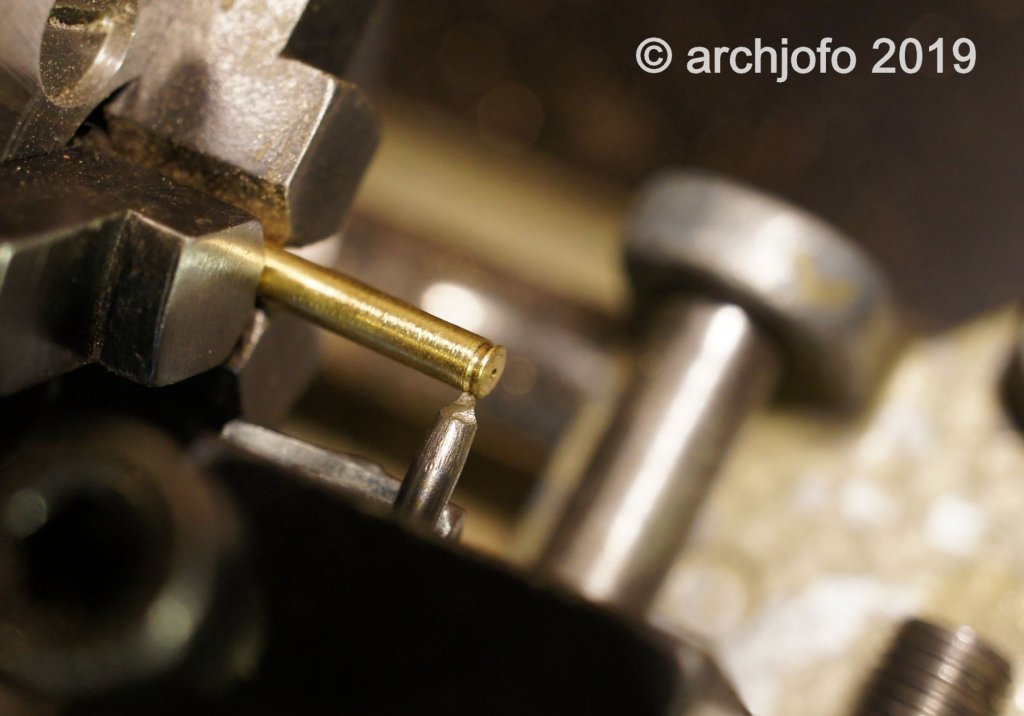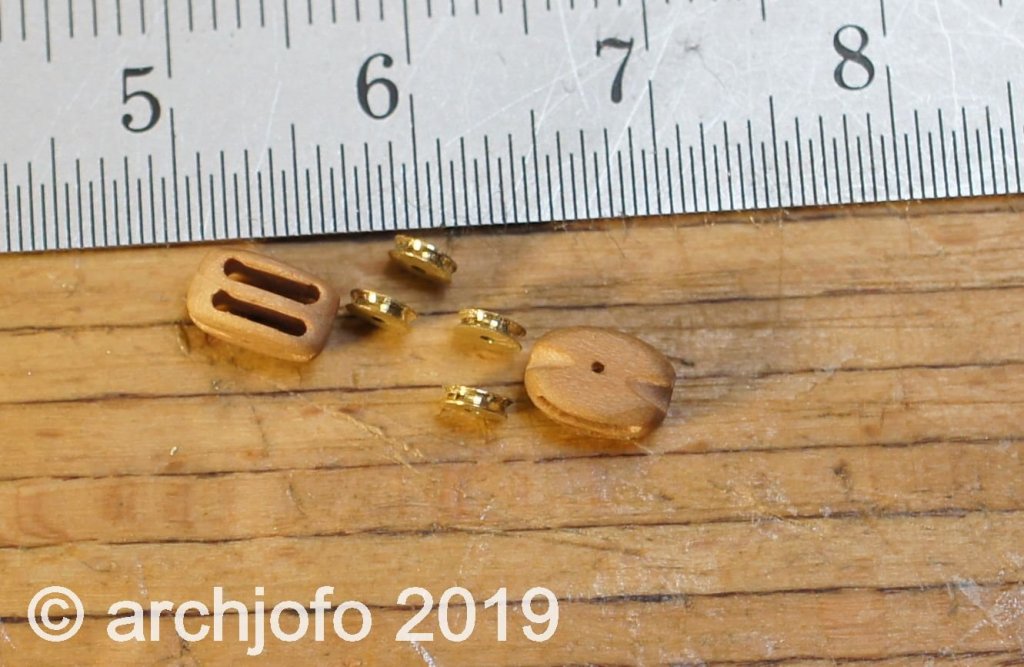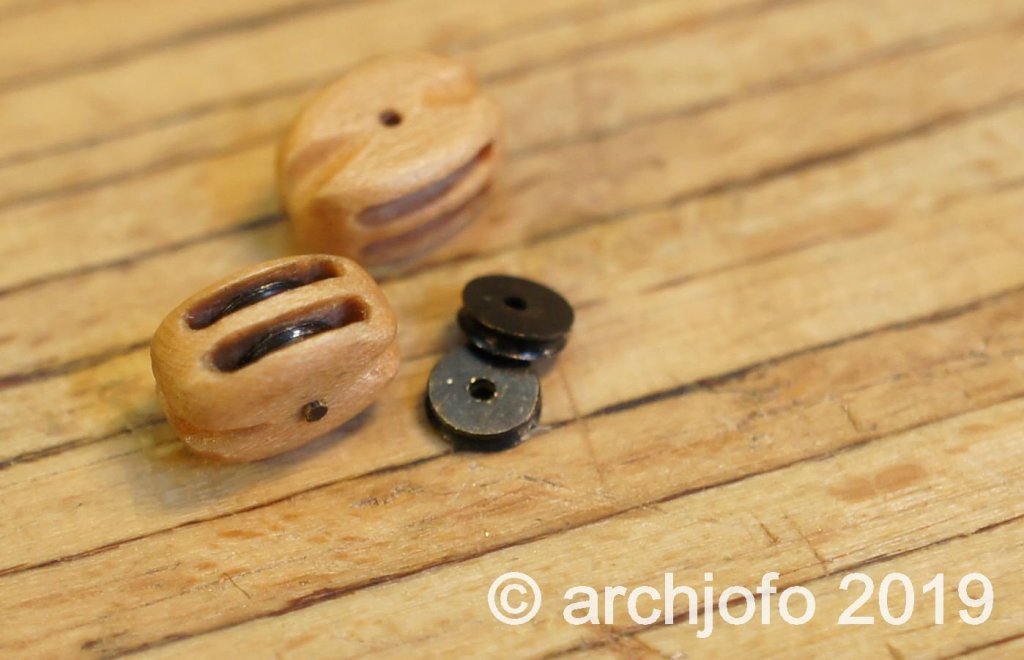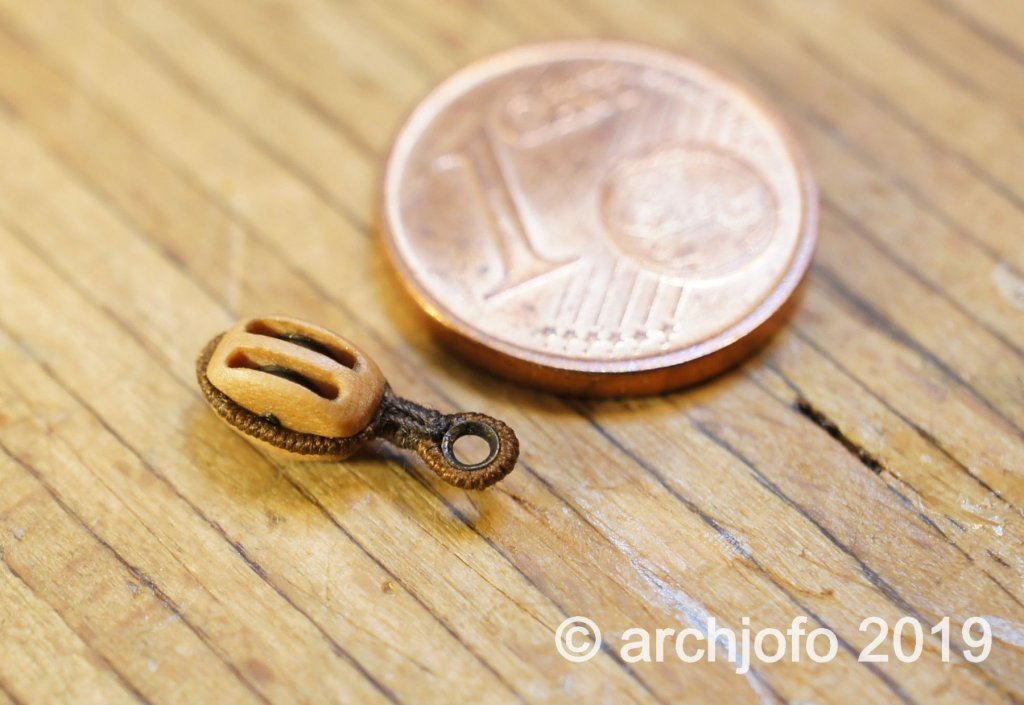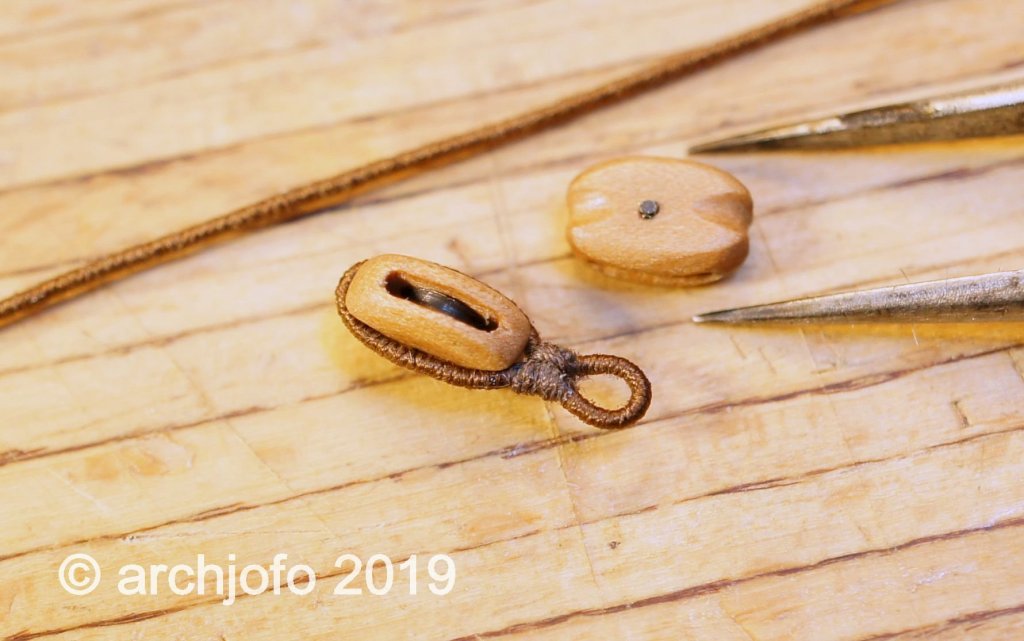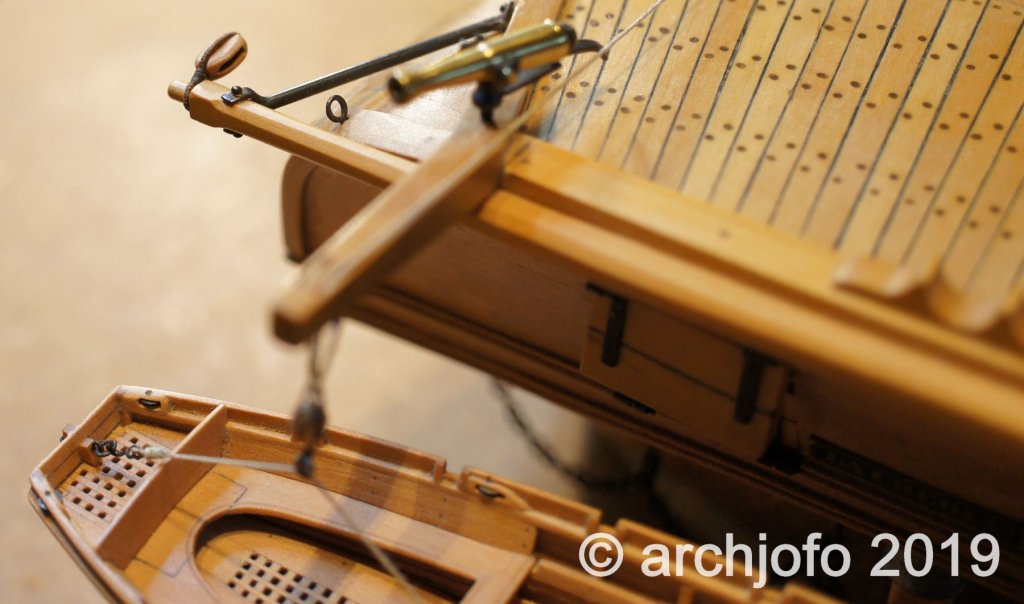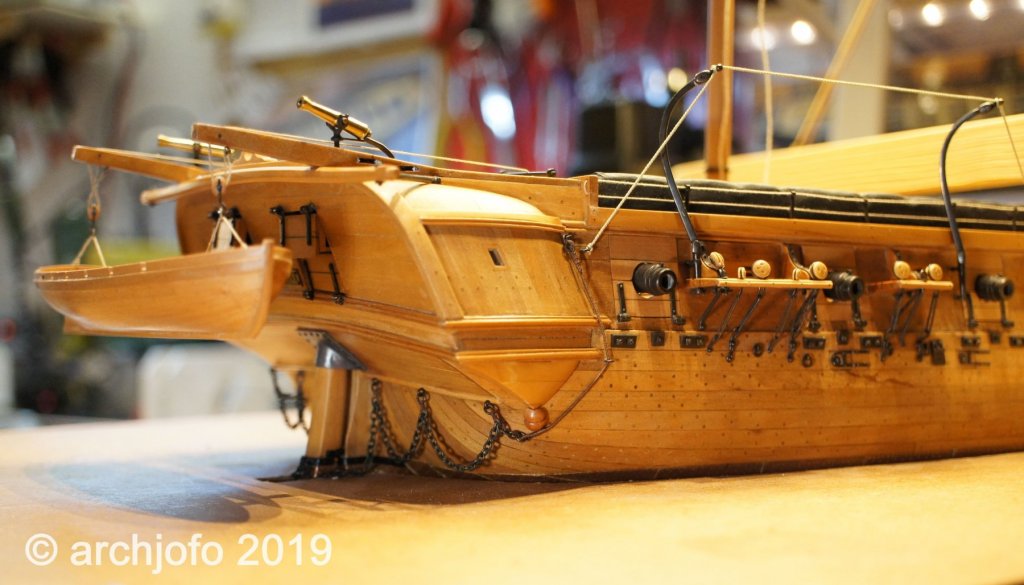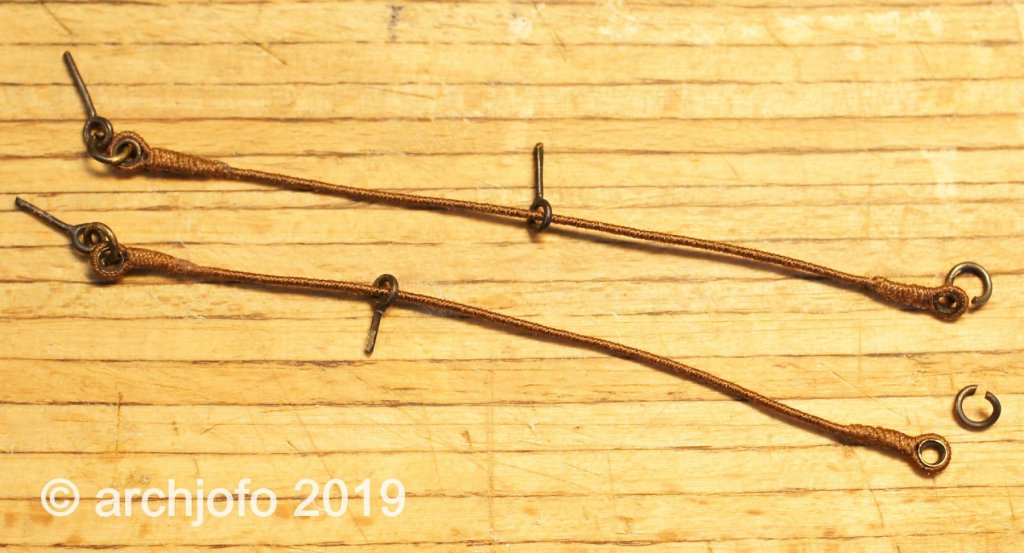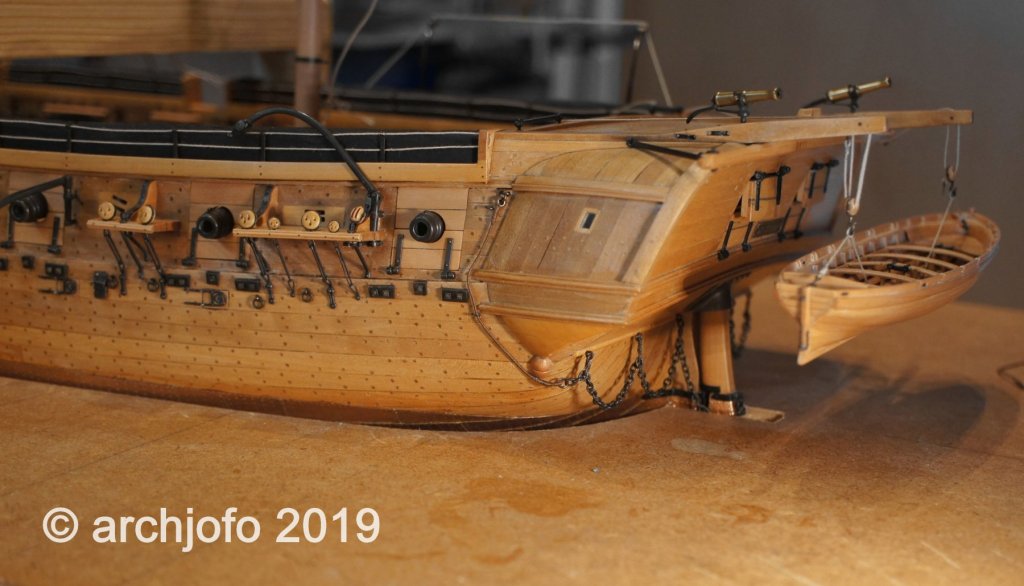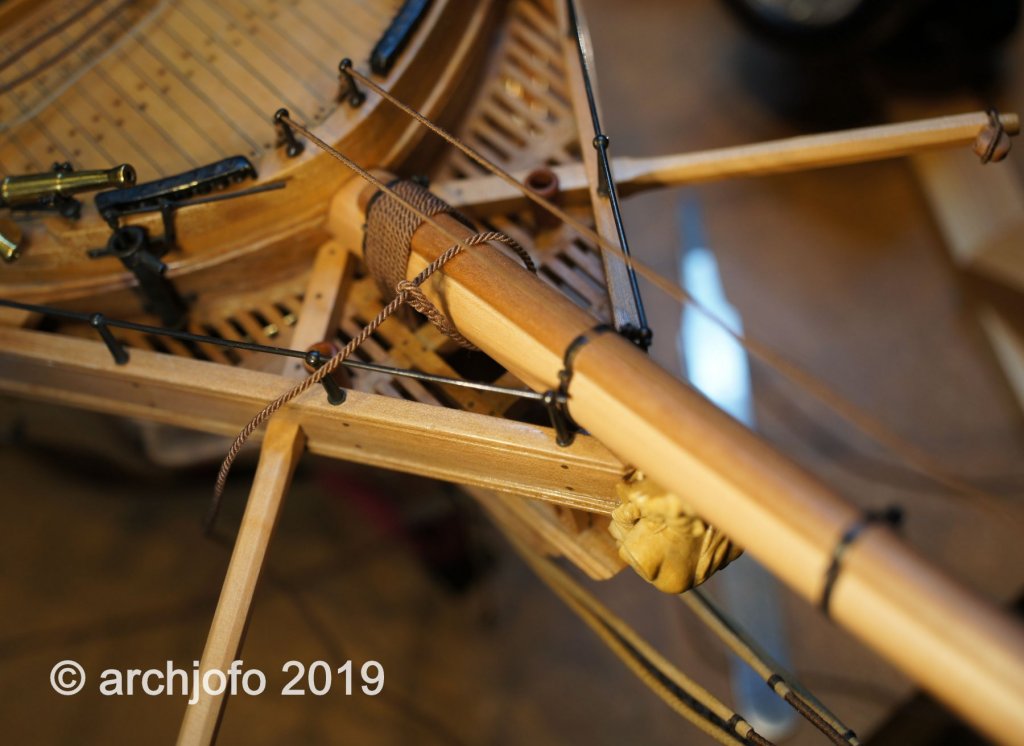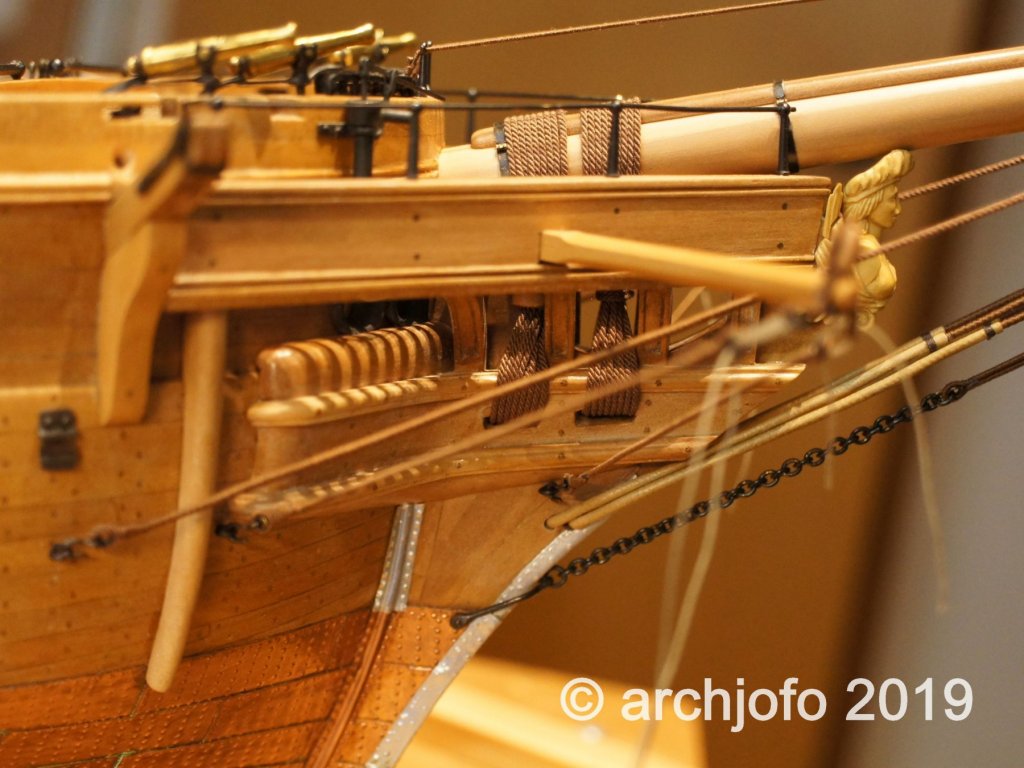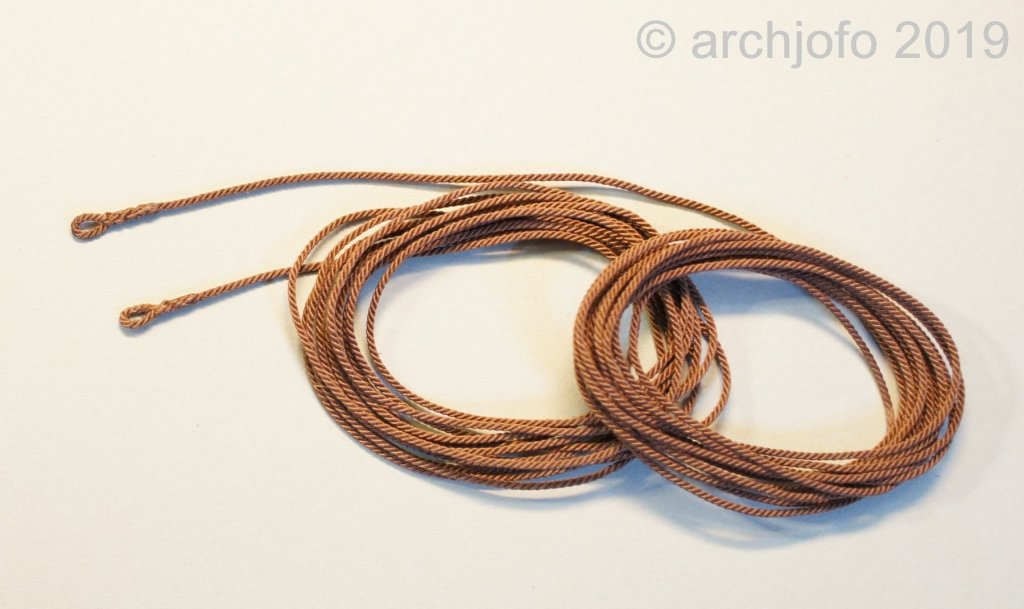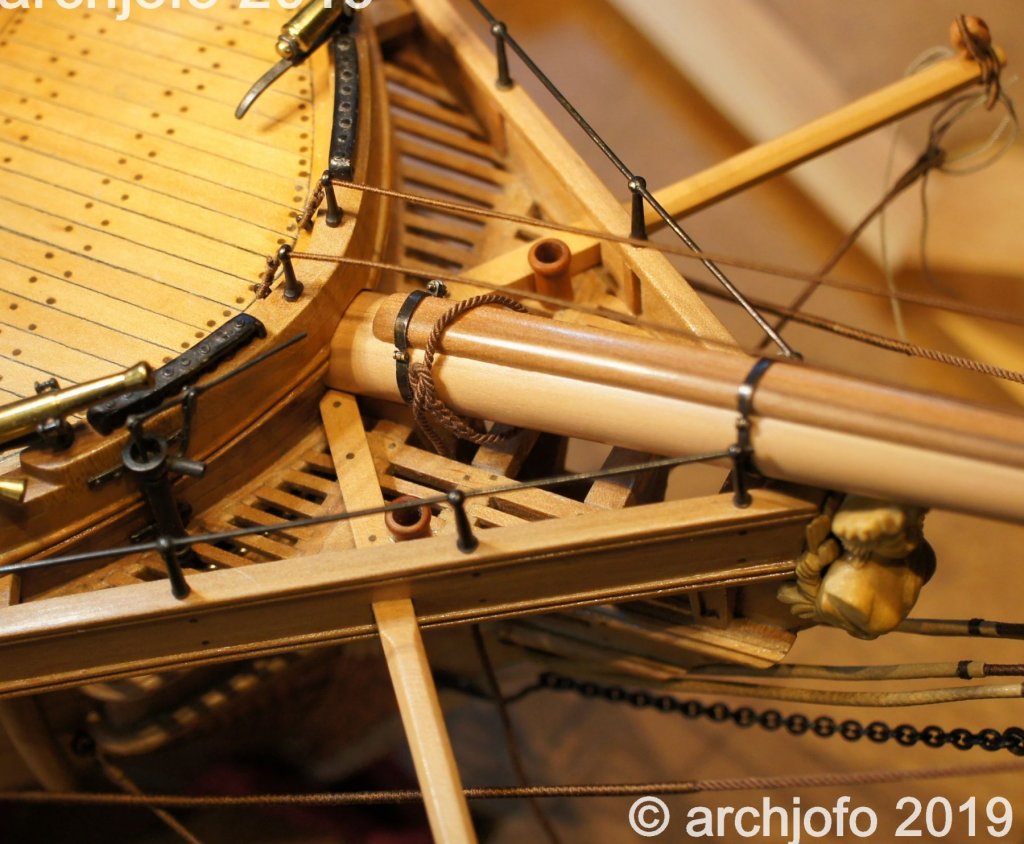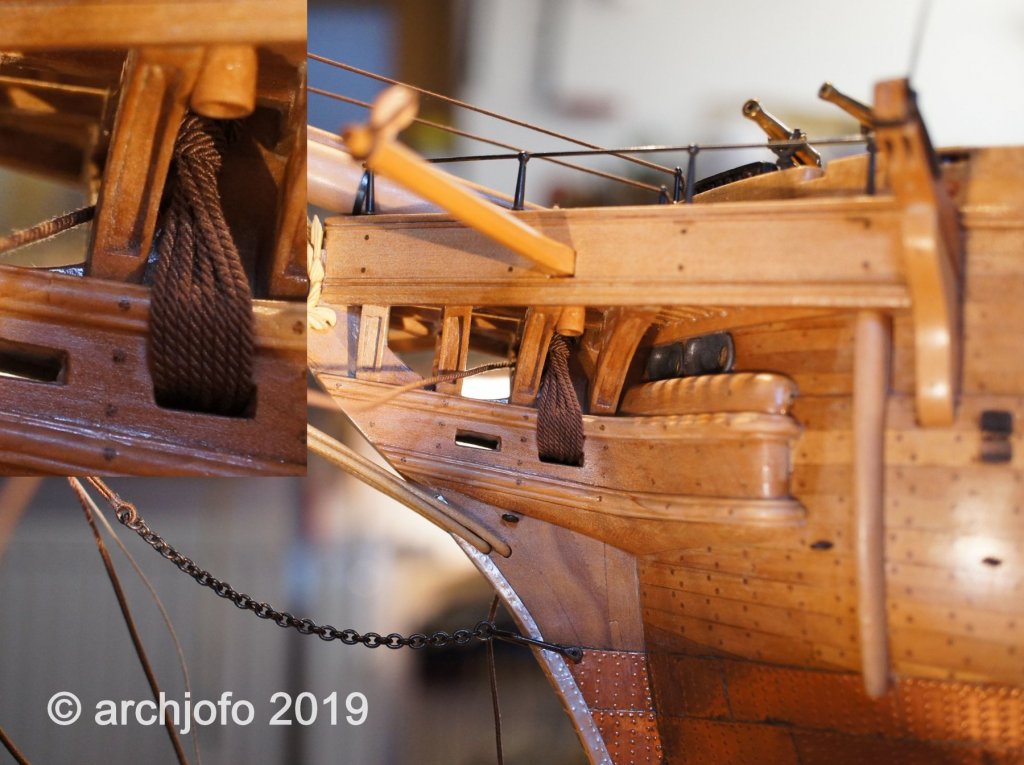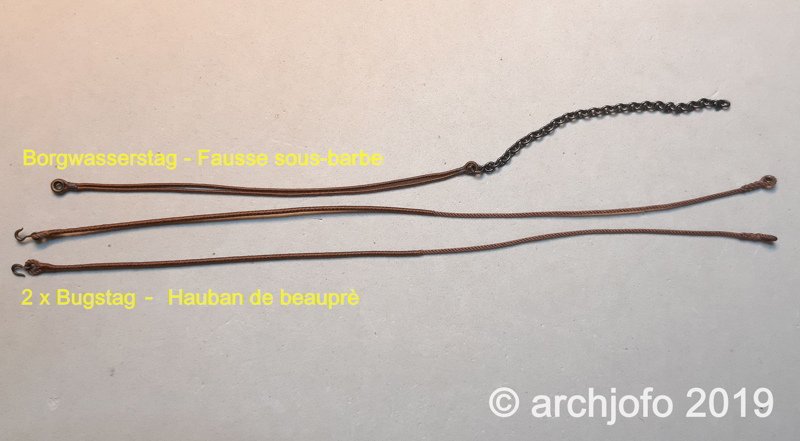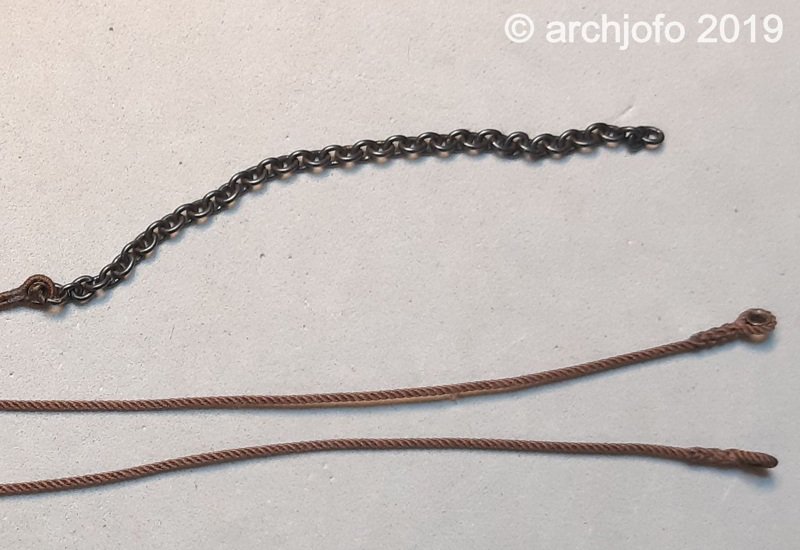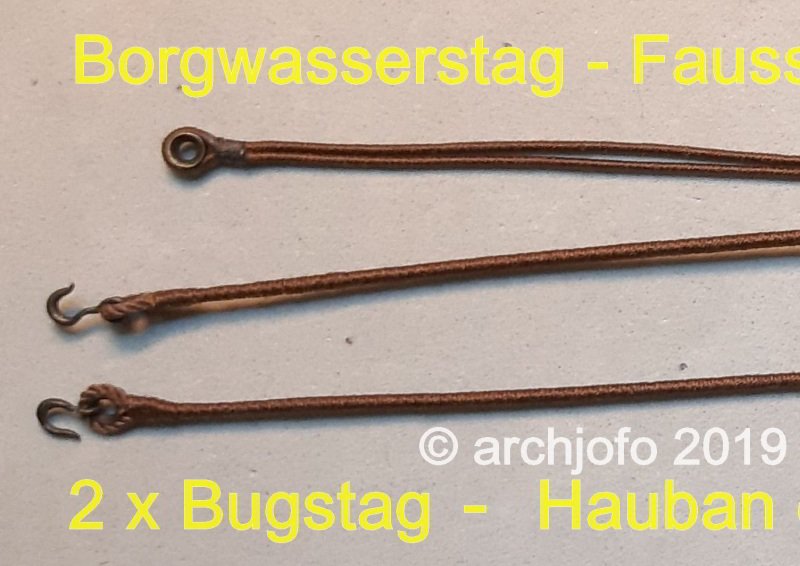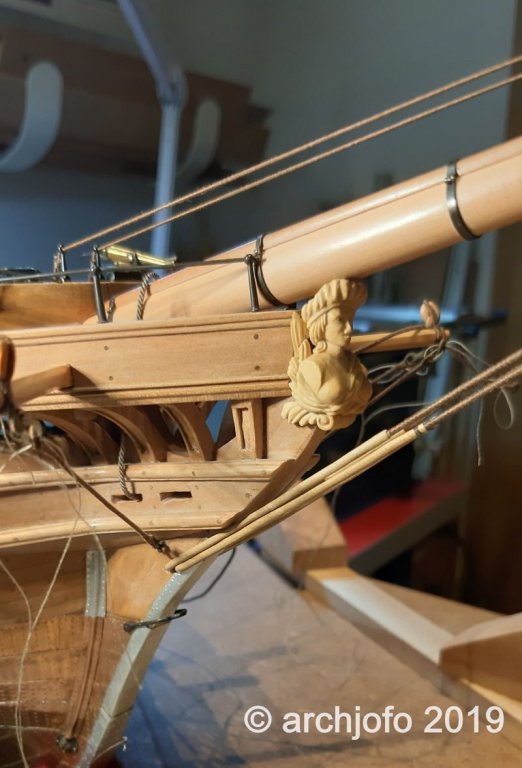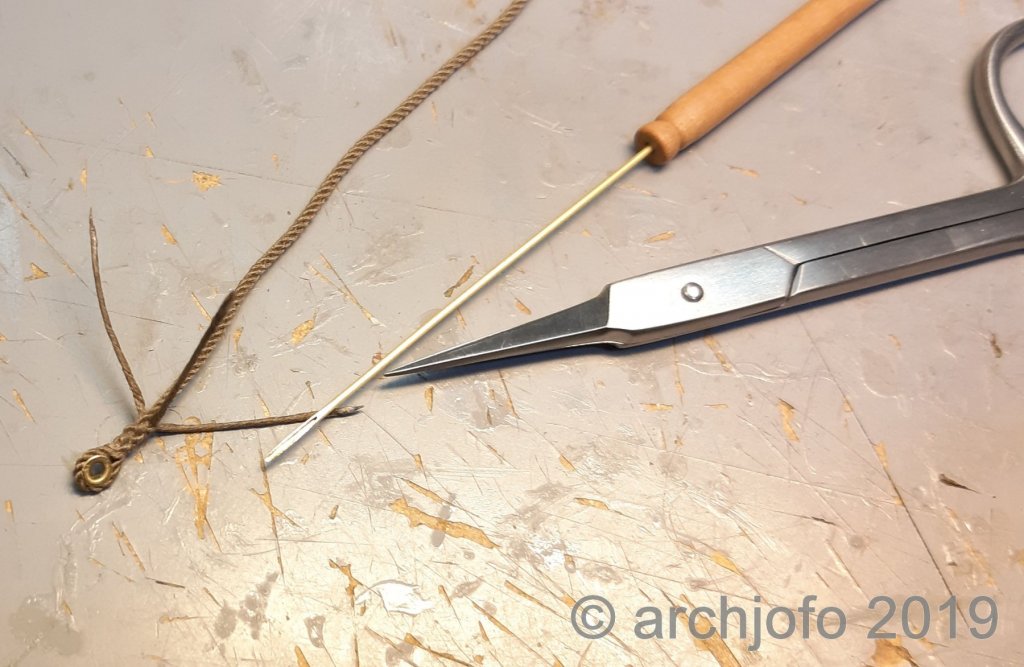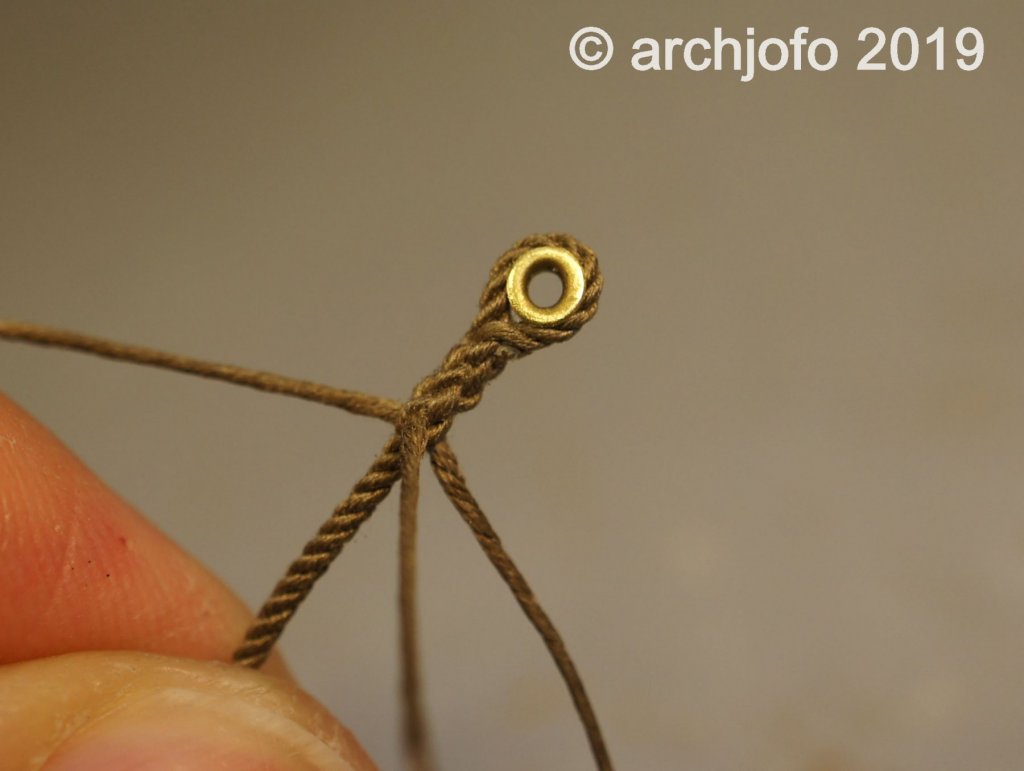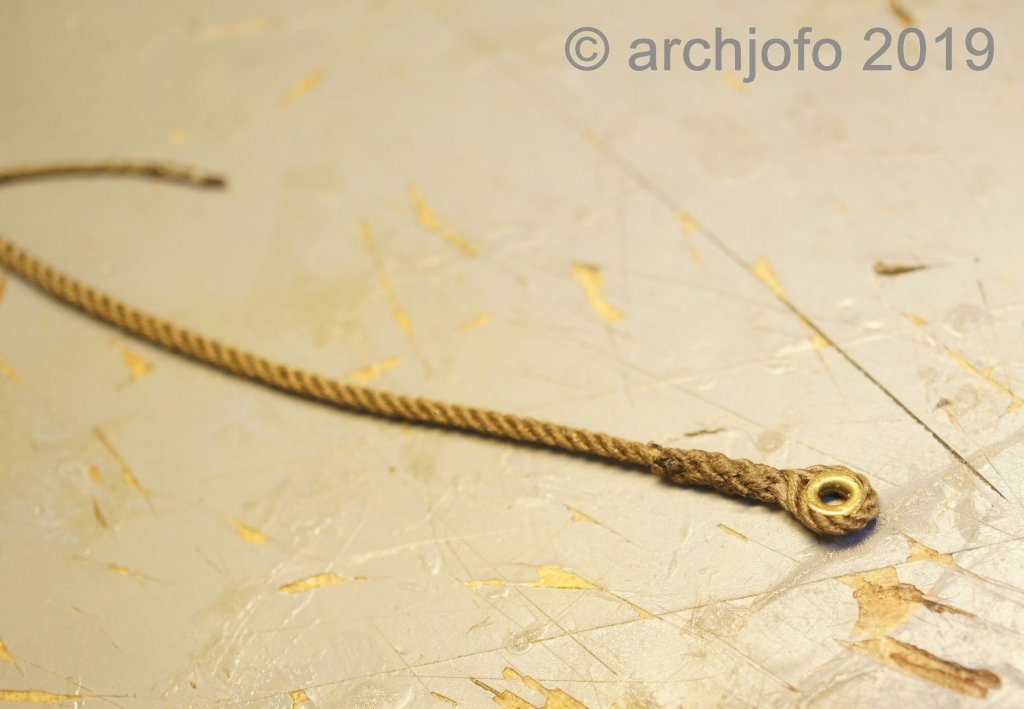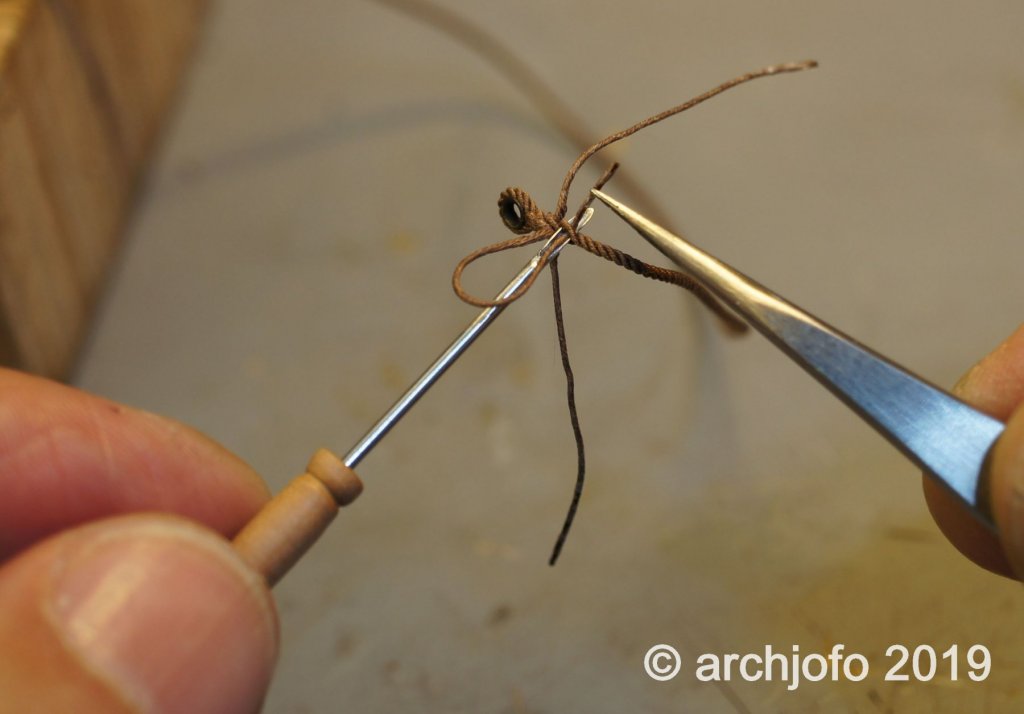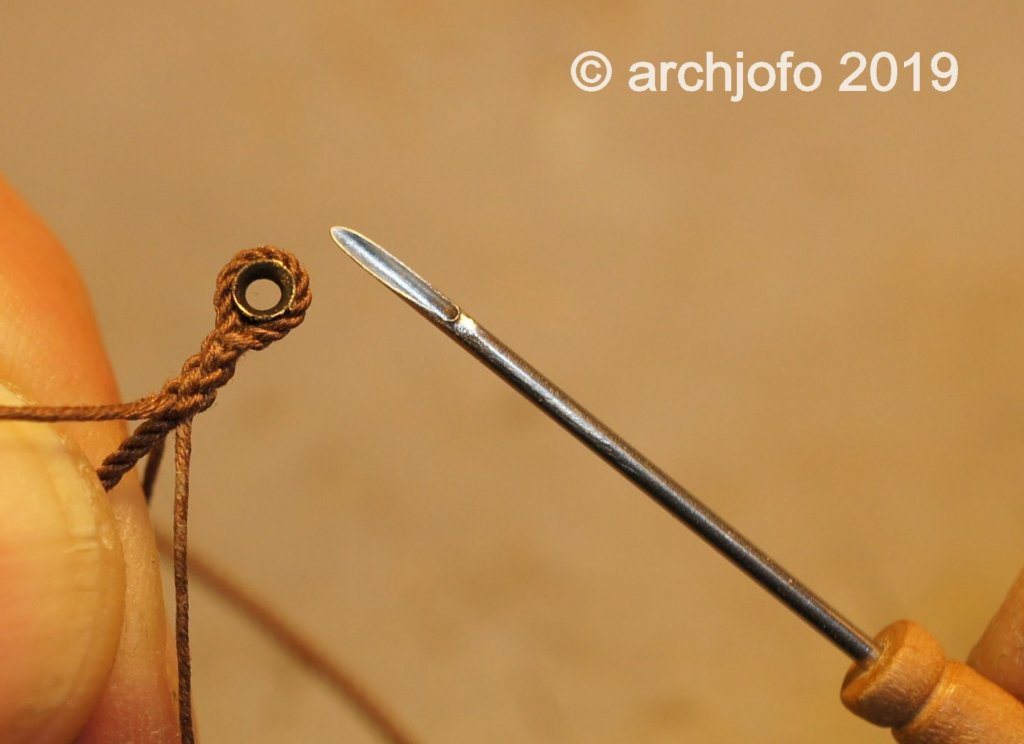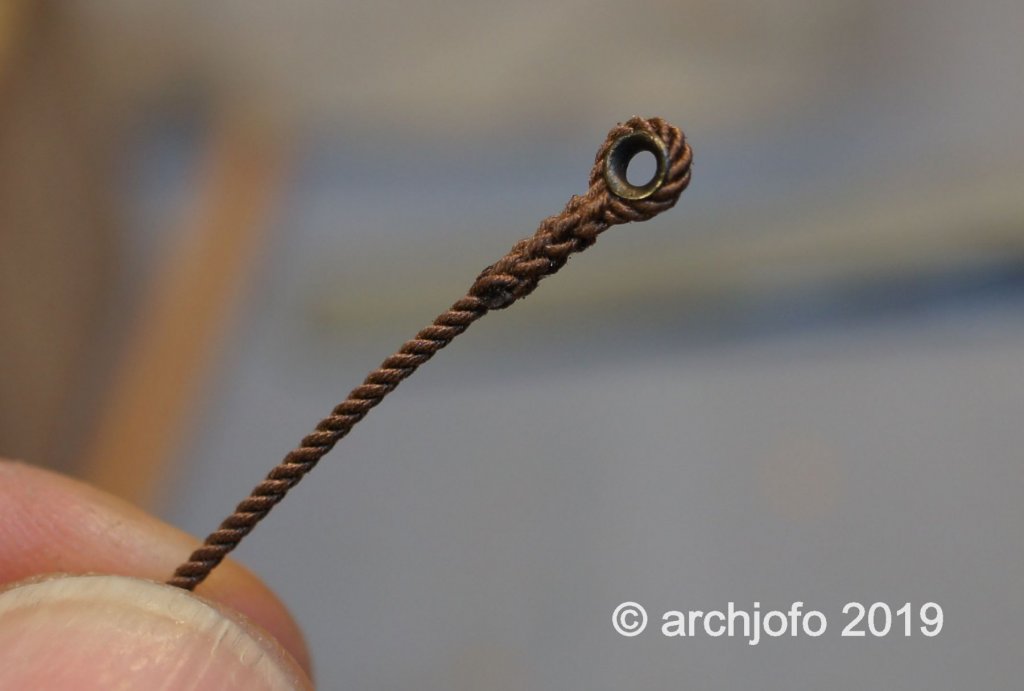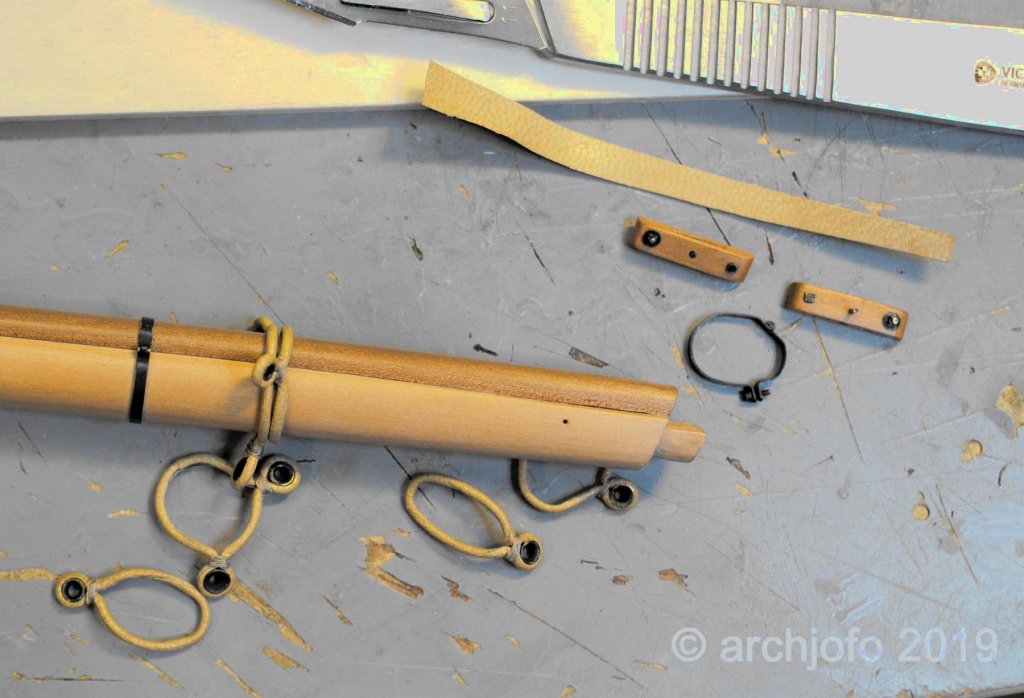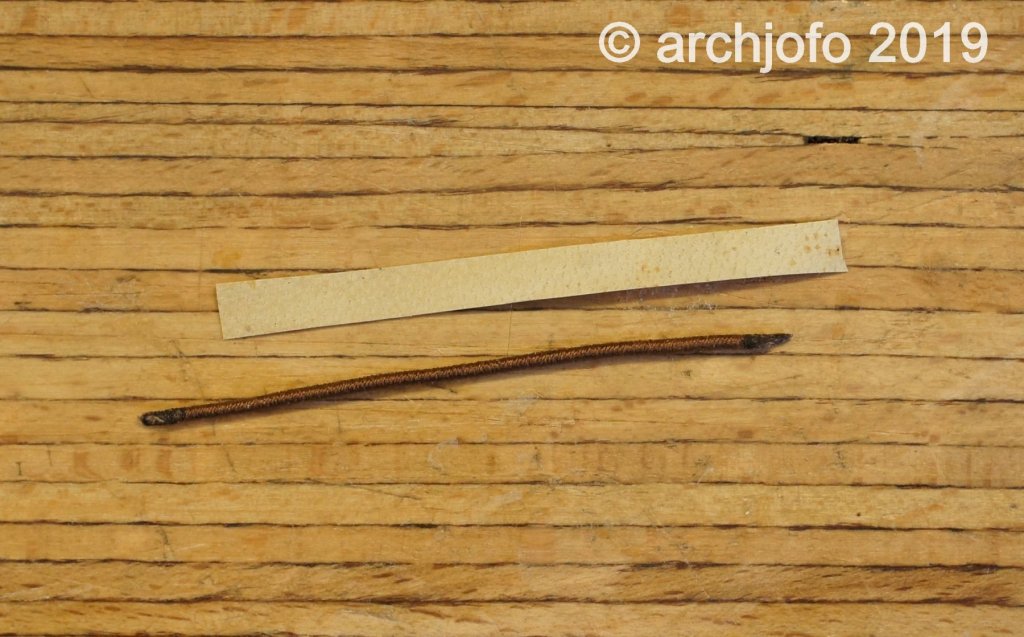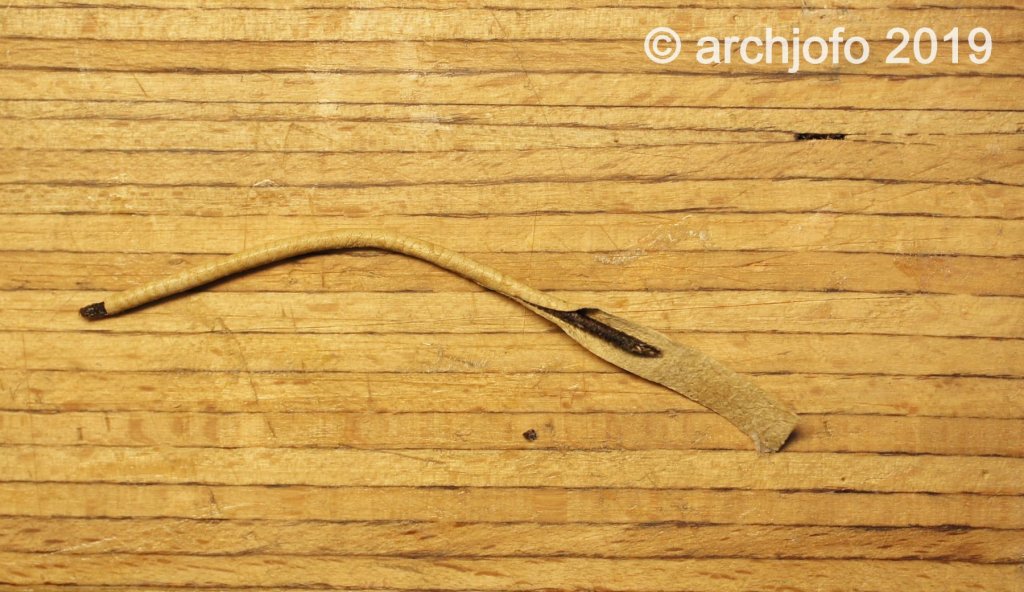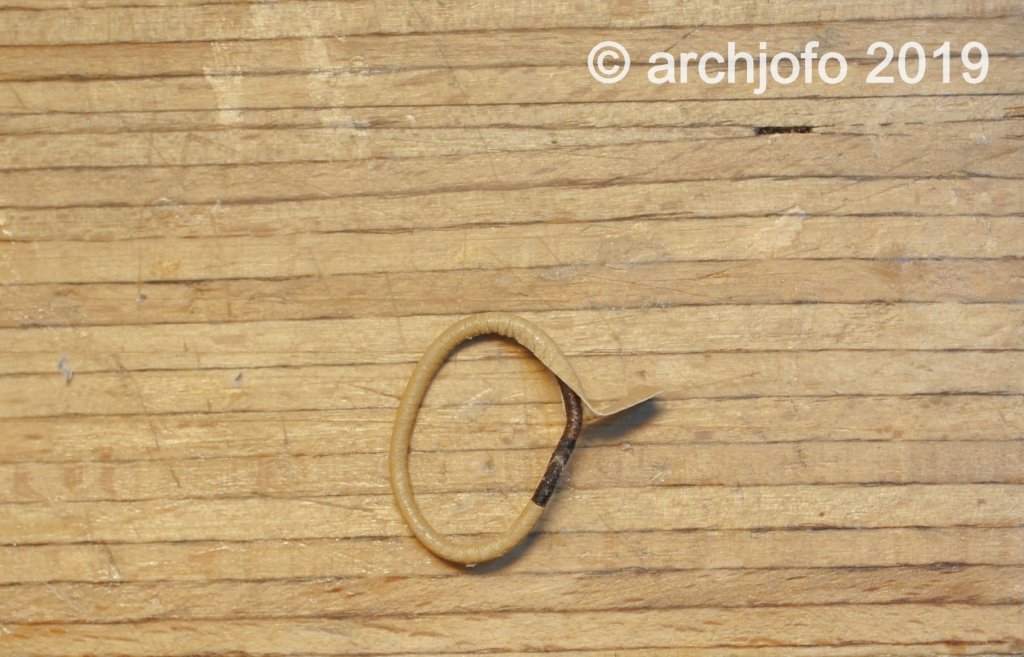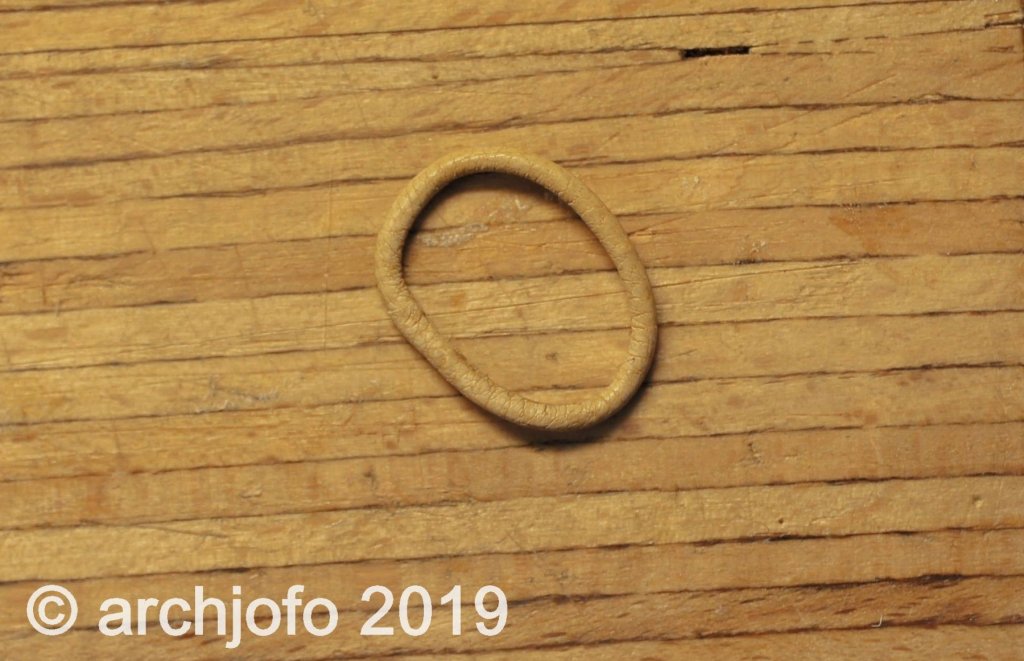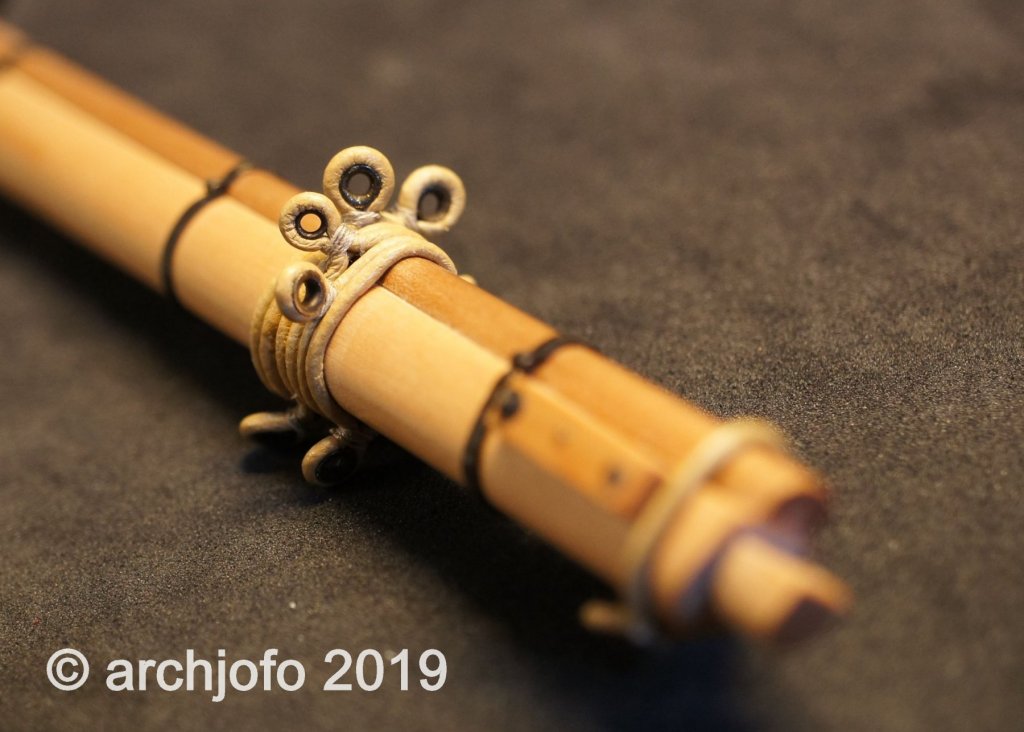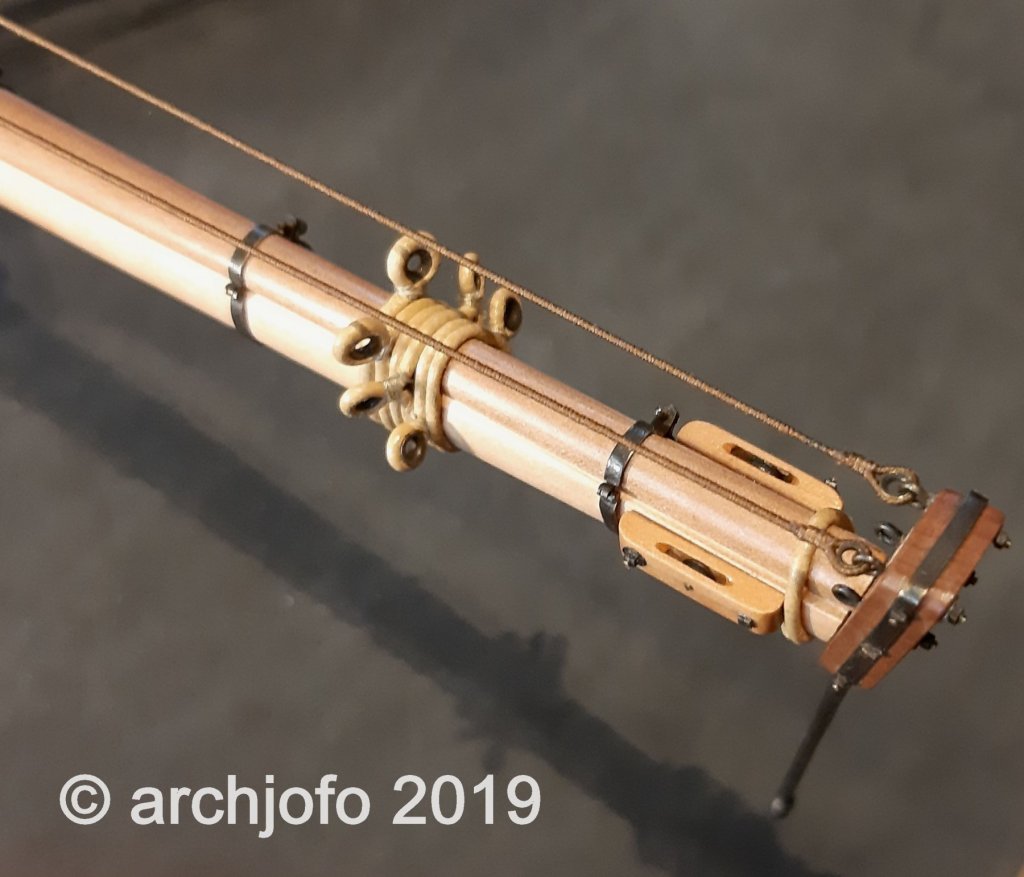-
Posts
1,498 -
Joined
-
Last visited
Content Type
Profiles
Forums
Gallery
Events
Everything posted by archjofo
-
The ropes for the hammock cranes have to be tensioned. I did that with tiny thimbles Ø 1,1 mm and lashings. The thimbles on the next image have the following diameter from left to right: Ø 1,1 mm Ø 2,2 mm Ø 2,6 mm The first attempts with seizings are not very nice. With a "fake splice" it looks better?
-
I follow the very impressive work with great interest and I'm looking forward to the sequel.
-
Hello Karl, fantastic work! I admire your skill.
- 87 replies
-
- royal caroline
- yacht
-
(and 1 more)
Tagged with:
-
The standing rigging looks fantastic. The complete model is wonderful.
- 306 replies
-
- schooner
- la jacinthe
-
(and 1 more)
Tagged with:
-

USS Agawam by Thistle17 - Scale 1:48
archjofo replied to Thistle17's topic in - Build logs for subjects built 1851 - 1900
Fantastic work ! -

La Toulonnaise 1823 by ward - FINISHED - 1/50
archjofo replied to ward's topic in - Build logs for subjects built 1801 - 1850
Finally a French ship again. I'm very interested in that.- 26 replies
-
- schooner
- la toulonnaise
-
(and 1 more)
Tagged with:
-
Thanks for the many LIKES. The bowsprit shrouds and the preventer-bobstay with chain have been completet in the meantime. The bowsprit shrouds with eye splices, the bobstays and the preventer-bobstay with chain were installed so far. The lashings are only made firm if everything fits. The bobstays are covered with leather. The conclusion of the leather coats was secured with a closed band.
-
Hello Karl, I wish you success for the new project. It will certainly be like the others a great model.
- 87 replies
-
- royal caroline
- yacht
-
(and 1 more)
Tagged with:
-
Hi Ed, I'm always excited when I look at your report. This is model building at the highest level. Your model exudes a fascination that is unique and fantastic. Thanks also for the fact that you report so much about the detailed work. I have been able to learn from this and can also learn a lot in the future.
- 3,618 replies
-
- young america
- clipper
-
(and 1 more)
Tagged with:
-
Hello thanks in Advance for the nice comments and the LIKES. To be continued: Other tackle elements for the bowsprit were manufactured and installed. There are then later fixed different stays. I show step by step how to dress a strop with genuine leather. First step: Second step: Third step: Fourth step:
-
I love these details. Unfortunately, only the chimney can be seen on my corvette.
- 306 replies
-
- schooner
- la jacinthe
-
(and 1 more)
Tagged with:
About us
Modelshipworld - Advancing Ship Modeling through Research
SSL Secured
Your security is important for us so this Website is SSL-Secured
NRG Mailing Address
Nautical Research Guild
237 South Lincoln Street
Westmont IL, 60559-1917
Model Ship World ® and the MSW logo are Registered Trademarks, and belong to the Nautical Research Guild (United States Patent and Trademark Office: No. 6,929,264 & No. 6,929,274, registered Dec. 20, 2022)
Helpful Links
About the NRG
If you enjoy building ship models that are historically accurate as well as beautiful, then The Nautical Research Guild (NRG) is just right for you.
The Guild is a non-profit educational organization whose mission is to “Advance Ship Modeling Through Research”. We provide support to our members in their efforts to raise the quality of their model ships.
The Nautical Research Guild has published our world-renowned quarterly magazine, The Nautical Research Journal, since 1955. The pages of the Journal are full of articles by accomplished ship modelers who show you how they create those exquisite details on their models, and by maritime historians who show you the correct details to build. The Journal is available in both print and digital editions. Go to the NRG web site (www.thenrg.org) to download a complimentary digital copy of the Journal. The NRG also publishes plan sets, books and compilations of back issues of the Journal and the former Ships in Scale and Model Ship Builder magazines.


